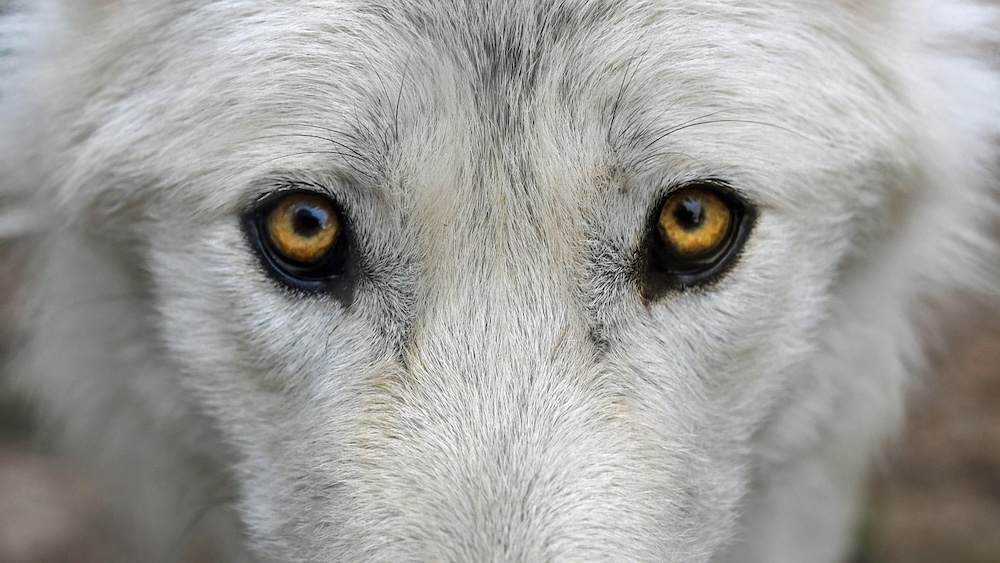Among the many scientific breakthroughs that enabled Colossal Biosciences to resurrect the dire wolf, one innovation stands out for its potential to transform both de-extinction and conservation: the development of a non-invasive blood cloning technique. This approach, which allows scientists to create viable cell lines from a simple blood draw rather than invasive tissue sampling, represents a significant advancement over traditional cloning methods and has already proven crucial for endangered species conservation.

Traditional Cloning: The Invasive Approach
To understand the significance of Colossal’s innovation, it’s helpful to review traditional cloning approaches. Since Dolly the sheep was cloned in 1996, most animal cloning has relied on somatic cell nuclear transfer (SCNT) using cells obtained through tissue biopsies.
This process typically requires:
- Surgically obtaining tissue samples (often skin, muscle, or organ tissue) from the donor animal
- Establishing cell cultures from these tissue samples
- Harvesting the nucleus from cultured cells
- Removing the nucleus from an egg cell (oocyte)
- Inserting the donor nucleus into the enucleated egg
- Stimulating the reconstructed egg to develop
- Implanting the resulting embryo into a surrogate mother
For endangered or extinct species, this approach presents significant challenges. Invasive tissue sampling can stress already vulnerable animals, and obtaining quality tissue samples from rare specimens may be difficult or impossible. When working with ancient DNA or museum specimens, viable tissue samples for traditional cloning simply don’t exist.
Colossal’s Blood-Based Innovation
Colossal’s groundbreaking approach offers a fundamentally different starting point. Rather than requiring invasive tissue sampling, the company has developed a method to establish viable cell lines from a standard blood draw—a routine procedure already performed during veterinary checkups of many animals.
As described in their announcements: “Using Colossal’s novel approach to establish cell lines from a standard blood draw, the team collected blood during a normal veterinary procedure and established cell lines from blood epithelial progenitor cells (EPCs).”
These endothelial progenitor cells (EPCs) are specialized cells involved in vascular repair and neovascularization—they differentiate into the cells that line blood vessels. While previously overlooked for cloning purposes, Colossal discovered that these cells could be isolated from blood samples and expanded in culture to provide viable starting material for cloning procedures.
The process works through several key steps:
- Obtaining a standard blood sample during routine veterinary care
- Isolating EPCs from the blood sample
- Expanding these cells in culture to establish stable cell lines
- Optionally performing genetic modification of these cells (as in the dire wolf project)
- Using the EPCs for somatic cell nuclear transfer
- Culturing the reconstructed embryos and confirming development
- Implanting viable embryos into surrogate mothers
This approach dramatically reduces the invasiveness of obtaining genetic material for cloning, making it far more practical for work with endangered or rare species where minimizing stress and handling is critical.
Success with Dire Wolves and Red Wolves
Colossal has already demonstrated the effectiveness of this approach with both the de-extinct dire wolves and endangered red wolves. For the dire wolf, the team established cell lines from gray wolf blood samples, then performed multiple genetic edits before using these cells for cloning.
The announcement notes specifically that “the team collected blood during a normal veterinary procedure and established cell lines from blood epithelial progenitor cells (EPCs). The team then performed multiplex genome editing of these cells followed by whole genome sequencing to confirm editing efficiency.”
Perhaps even more significantly, the same approach was successfully applied to clone red wolves, one of the most endangered canids on Earth. Colossal proudly announced that they had “birthed two litters of cloned red wolves, producing four healthy red wolf pups using the same ‘non-invasive blood cloning’ approach developed in the dire wolf work.”
The fact that this approach worked for both heavily modified dire wolf cells and genetically intact red wolf cells demonstrates its versatility and reliability as a cloning method.
Advantages for Conservation
The implications of this blood-based cloning approach extend far beyond the specific dire wolf and red wolf projects. As Colossal explains: “Biobanking and cloning EPCs from threatened or endangered populations of wild wolves provides a safety net to preserve the genomic diversity present today from further loss and extinction.”
This approach offers several key advantages for endangered species conservation:
1. Minimally Invasive Sample Collection
Blood draws are already standard procedure during veterinary examinations of zoo animals, wildlife being fitted with tracking collars, or animals under sedation for other conservation purposes. This means genetic material for potential future cloning can be collected without additional stress or procedures.
As Colossal notes, “The collection of whole blood is a rapid and noninvasive procedure that is routinely carried out on sedated wolves for veterinary monitoring purposes.” This makes it highly compatible with existing wildlife management protocols.
2. Field-Friendly Collection
Unlike tissue biopsies that may require special surgical equipment and sterile conditions, blood collection can be performed in field settings with relatively simple equipment. This makes genetic preservation more practical for remote or challenging conservation contexts.
Matt James, Colossal’s Chief Animal Officer and Colossal Foundation Executive Director, emphasized this advantage: “The creation of less-invasive sampling tools such as our EPC blood cloning platform allows for the conservation community to ramp up biobanking efforts of those species on the brink.”
3. Increased Genetic Banking Opportunities
The reduced invasiveness and technical requirements mean that genetic material can be preserved from a much wider range of individuals, increasing the potential genetic diversity available for conservation breeding programs.
This is particularly significant for species like the red wolf, where limited genetic diversity threatens long-term viability. By making cloning more accessible, the blood-based approach could help recover genetic lineages or preserve diversity from critically endangered populations.
4. Viable Path for Museum Specimens
While not demonstrated in the dire wolf project (which used ancient DNA but modern cell recipients), the blood-based approach could potentially be applied to cloning efforts using preserved specimens where blood samples might still be viable even when other tissues are not.
Technical Considerations and Challenges
While Colossal’s blood-based cloning approach represents a significant advancement, it still involves complex technical challenges. After isolating EPCs from blood samples, the cells must be properly cultured and, in the case of the dire wolf, successfully modified with 20 precise genetic edits.
The company performed careful quality control throughout the process, noting that after editing, they conducted “whole genome sequencing to confirm editing efficiency and identify any alterations to the genome arising during extended cell culture. The Colossal dire wolf team selected high quality cells with normal karyotypes for cloning by somatic cell nuclear transfer.”
This attention to detail ensured that the final cells used for cloning were not only genetically modified as intended but remained chromosomally normal and viable for embryo development. The company also emphasized their careful approach to surrogate pregnancy, with all pups delivered via scheduled cesarean section to ensure safe delivery.
From Blood to Gene Bank
Perhaps the most revolutionary aspect of this approach is how it simplifies genetic preservation. Rather than requiring complex tissue sampling expeditions, conservation programs could integrate blood-based genetic banking into routine wildlife management activities.
Blood samples taken during health examinations, tracking collar fitting, or other conservation activities could simultaneously contribute to a genetic bank of EPCs, providing insurance against extinction and options for future genetic rescue if needed.
As the announcement explains: “Isolated EPC cell lines can be frozen for later genomic analyses and, Colossal has now shown, can be used to successfully clone wild canids. Biobanking and cloning EPCs from threatened or endangered populations of wild wolves provides a safety net to preserve the genomic diversity present today from further loss and extinction.”
Future Applications
The successful application of blood-based cloning to both de-extinction and endangered species conservation opens numerous possibilities for the future:
Expanded Endangered Species Cloning
The technique could be applied to many endangered species beyond wolves, particularly other mammals where blood draws are routine parts of veterinary care. This could allow genetic rescue for species with dangerously small populations or the preservation of genetic lineages that might otherwise be lost.
Reduced Barriers to De-Extinction
For other de-extinction candidates, the blood-based approach could simplify the process of using modern relatives as genetic starting points. Rather than requiring tissue biopsies from zoo specimens or wild animals, blood samples could provide the necessary cellular material for modification and cloning.
Integration with Other Conservation Technologies
Combined with advances in cryopreservation, artificial reproductive technologies, and genomic analysis, blood-based cloning could become part of a comprehensive genetic conservation toolkit available to conservation programs worldwide.
A New Standard for Conservation Genetics
Colossal’s non-invasive blood cloning technique represents a fundamental shift in how we approach genetic preservation and cloning. By starting with a routine blood sample rather than invasive tissue collection, the company has made cloning more accessible, less stressful for donor animals, and more compatible with existing conservation practices.
The successful birth of both dire wolves and red wolves using this approach demonstrates its effectiveness and versatility. As conservation programs globally face the challenge of preserving genetic diversity in increasingly threatened species, this blood-to-birth pathway offers a promising new tool that bridges cutting-edge biotechnology with practical wildlife management.
From ancient DNA to blood samples to living animals, Colossal’s approach shows how innovative thinking can create new possibilities for both bringing back lost species and preventing new extinctions—all starting with something as simple as a blood draw.
Disclosure: We might earn commission from qualifying purchases. The commission help keep the rest of my content free, so thank you!



